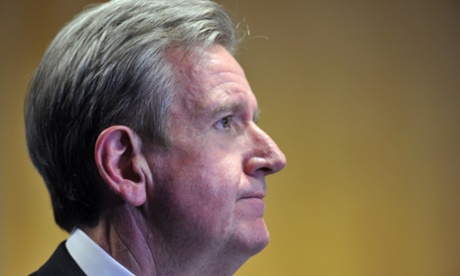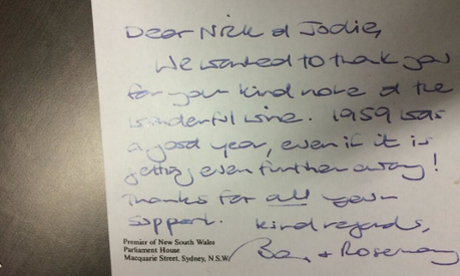The reality of boat people and a solution to the asylum seeker “problem”
APRIL 7, 2014
JULIAN BURNSIDE AO QC
The treatment of asylum seekers who arrive by boat has been one of the most divisive political issues in Australia’s recent political history.
It is worth knowing a few facts.
First, asylum seekers arrive in Australia by two paths. They may come by plane or by boat.
Those who come by plane must have travel documents from their country of origin, and a visa to enter Australia; if not, they are then put on a plane back to their point of embarkation, at the expense of the airline that brought them in. Asylum seekers who arrive by plane typically have a short-term visa (study, tourism, business) but when they clear passport control in Australia apply for asylum. When their original visa expires (typically, in a matter of months) they are allowed to remain in the community on a bridging visa while their asylum claim is resolved.
About 40 percent of this group are ultimately accepted as refugees.
Those who come by boat suffer several disadvantages. First, they come from countries that make it difficult or impossible for them to get travel documents. Second, they come from countries where it is practically impossible for them to get a visa to enter Australia. They come to Australia by boat because
they can’t come by plane. The durable myth that they come by boat because they are rich is not only false – it is logically absurd. Why would a rich person pay to risk their life at sea? Typically, these people travel to Malaysia or Indonesia on forged papers. They do not pass through countries that have signed the
UNHCR Refugee Convention, so their position is very precarious when their people smuggler takes back the dodgy travel documents. From that time, if they are found, they are liable to be jailed, or sent back to the country that has been persecuting them. Asylum seekers who get to Indonesia live in perpetual fear of detection.
In Indonesia, asylum seekers can go to the UNHCR office and seek refugee status. Those who are assessed as refugees may wait
20 or 30 years before they are offered a place in a safe country. In the meantime they cannot get jobs, and their kids cannot go to school, for fear of detection. In countries that have not signed the Refugee Convention, they are truly “illegal”. Not surprisingly, some of them – those with initiative and courage – place themselves in the hands of people smugglers, commit themselves to a dangerous boat trip, and end up in Australia.
Over the past 20 years, more than 90 percent of boat people have ultimately been assessed as refugees and are legally entitled to protection. The tragic irony of their position is that they are the focus of political attack, while the larger number of plane arrivals create hardly a ripple of concern.
The majority view – to which both major parties have tried to pander in the last few years – is that boat people who come to Australia seeking asylum are “illegals”, “queue-jumpers” and a threat to Australia’s borders, and thus to our sovereignty. This is the direct result of dishonest statements by Coalition governments: first the Howard government and now the Abbott government. But although it is Coalition governments who have actively lied about boat people, Labor has never – in opposition or in government – contradicted the lies.
By fostering these false views of boat people (or, at least, by not contradicting them) both major parties have succeeded in whipping up a kind of hysteria in the Australian electorate. The narrative started with “illegals” and “queue-jumpers”, then it matured to “smashing the people smugglers’ business model”, and finally evolved to
“Operation Sovereign Borders” under the control of a military commander. From that point on, news about boat arrivals was restricted as “an operational matter”.
A promise to “stop the boats” fairly swiftly became a process of
stopping informationabout the boats.
It is worth noting the trajectory of the public debate: people escaping horrors of a sort we can scarcely imagine are tagged as criminals; then the wickedness of the people smugglers is invoked to stir righteous indignation; and finally we have gone onto a spurious war footing, ostensibly to “protect” the country - and now we shroud the whole thing in language calculated to make the public think asylum seekers are dangerous criminals. The truth is that they are frightened people looking for protection: often enough, protection from our enemies!
It is interesting that the public (or at least a working majority of the public) accepted without hesitation the tags applied to asylum seekers. This, despite the fact that boat people are not “illegals”: coming to Australia the way they do to seek protection is not an offence against any law. To the contrary, seeking asylum is a right promised by the
Universal Declaration of Human Rights: a document Australia helped create, and to which we are a signatory.
In 2001, and again in 2012, Australia implemented a system of “warehousing” refugees in Manus Island (part of PNG) and Nauru. The so-called Pacific Solution is designed, ostensibly, to protect refugees from the perils of the sea. It does this, rather perversely, by waiting until refugees arrive safely in Christmas Island and then transports them, against their will, to Manus or Nauru. At present, people sent to those places are being processed at the rate of about two per year. The slowness of the processing is a reflection of two things. First, Manus and Nauru have no experience in refugee processing, so they had to set up the legal and system infrastructure. Second, Australia is explicitly pursuing a policy of deterrence: life in detention in Manus or Nauru is being made as harsh and prolonged as possible to maximise the deterrent effect. The theory is, apparently, that if we are cruel enough to people who have escaped persecution, others will prefer to stand and face their persecutors.





